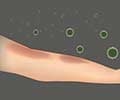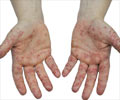- Marks, M., Mitjà , O., Solomon, A. W., Asiedu, K. B., & Mabey, D. C. (2015). Yaws. British Medical Bulletin, 113(1), 91–100.
- Narain JP1, Jain SK, Bora D, Venkatesh S. Eradicating successfully yaws from India: The strategy & global lessons. Indian J Med Res. 2015 May;141(5):608-13.
- Solomon, A. W., Marks, M., Martin, D. L., Mikhailov, A., Flueckiger, R. M., Mitjà , O., Asiedu, K., Mabey, D. C. (2015). Trachoma and Yaws: Common Ground? PLoS Neglected Tropical Diseases, 9(12).
- Rare diseases - Yaws - (https://rarediseases.org/rare-diseases/yaws/)
- Yaws - (https://en.wikipedia.org/wiki/yaws)
- Yaws - General Discussion - (https://medlineplus.gov/ency/article/001341.htm)
What is Yaws Disease?
Yaws is considered a neglected tropical disease caused by the bacterium Treponema pertenue, a subspecies of Treponema pallidum that causes venereal syphillis. However, Yaws is a non-venereal disease that affects the skin, bones, cartilage and joints.
While it affects only humans, children between 2 to 15 years are most suceptible to it, with peak incidence between 6 to 10 years. This chronic infectious disease is prevalent in warm and humid environments. The disease is common in rural communities with low-socioeconomic status and spreads mostly due to poor sanitation and personal hygiene.
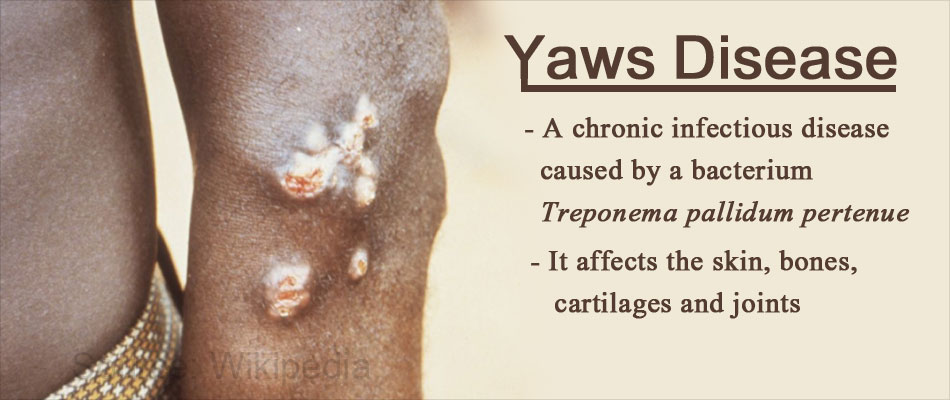
It is not considered fatal but it could cause disfigurement in the person.
Facts and Statistics about Yaws Disease
- The World Health Organization (WHO) targeted for the eradication of yaws and there was a decrease in the prevalence of disease by >95% between years 1950 and 1964.
- However, the disease has re-emerged and has become a main public health problem in West Africa, Southeast Asia and the Pacific lately.
- As of 2012, yaws was present in at least 14 tropical countries.
- Now there are only 13 countries as India has successfully eradicated the disease as of 2016.
- Yaws affects men and women alike and does not show any discrimination in race.
- Children less than 15 years constitute 75% of those affected.
- Yaws has a higher incidence in places where the mean annual isotherm is 270C or more, the annual rainfall is above 1300 mm per year and in rainy seasons.
What are the Causes of Yaws Disease?
Yaws disease is caused by Treponema pallidum, subspecies pertenue.
Mode of Transmission: It is transmitted through skin contact. Cuts or abrasions on the skin are the points of entry for the organism. Unlike syphilis, it is not transmitted sexually. It is not transmitted from mother to baby during birth.
It spreads when the fluid from the cuts of an infected person comes in direct contact with another; most commonly when kids are playing with each other.
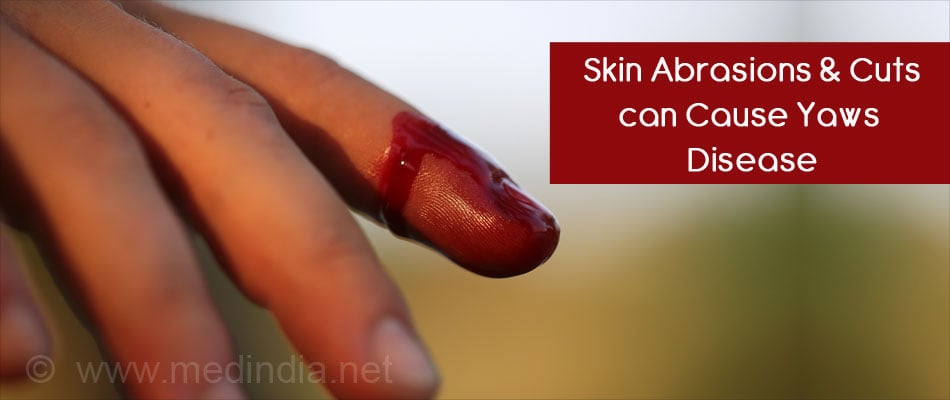
What are the Risk Factors for Yaws Disease?
Risk factors of yaws are:
- Having a family member with yaws (due to close proximity)
- Living in the endemic zone (warm, humid and moist climates)
- Overcrowding
- Poor hygiene
- Low socio-economic status
- Children between 2 and 15 years
- Wounds or abrasions on the skin
- Poor sanitation
What are the Clinical Features of Yaws Disease?
The clinical features of yaws can be described in 3 stages.
Primary yaws: A strawberry-like growth (papule) develops at the site of the bacterial inoculation on the skin, which is called the “mother yaw” (anywhere between 9 to 90 days) It is itchy but there is no pain. The mother yaw can develop into a 2-5cm lesion (papilloma) or it may form an ulcer. The lesions usually occur in the lower limbs. If they are not treated, it heals within 6 months leaving a scar.
Secondary yaws: After a couple of months secondary ulcers and lesions are seen on other parts of the body like the face, legs, arms, rectal and genital areas. Thick ulcers on the palms and soles can get cracked and lead to an infection, which causes pain and crab-like gait (crab yaws). Bones are involved in secondary yaws and can lead to swelling and pain in the bones. Joint pains are also common. When treated, the skin lesions get resolved in 2-4 weeks while bone pains go away earlier.
Tertiary yaws: Ten percent of untreated cases go on to develop latent infections usually within 5 years. They also mainly involve the skin but with widespread destruction of bones, joints and soft tissue. Nodular lesions may develop near the joints and their ulceration is seen. Gangosa is a mutilating facial appearance due to degenerative changes in the bones and cartilages of the nose, larynx and the mouth palate. Goundou is another condition that could arise and is an inflammation of the tissues and overgrowth of the bones near the nose.
How can we Diagnose Yaws Disease?
- Clinical Evaluation: Clinical evaluation plays a major role in diagnosing yaws disease.
- Dark Field Microscopy: Yaws can be confirmed by visualizing the Treponemes in a special kind of microscope called dark field microscopy, after clinical suspicion of yaws.
- Treponema Pallidum Particle Agglutination (TPPA) and Treponema Pallidum Hemagglutination (TPHA): These are serologic tests that help in detecting Treponema-specific antibodies. The test results remain positive for life, after the first positive result.
- The Venereal Disease Research Laboratory (VDRL) and the Rapid Plasma Reagin (RPR): These are serologic tests.They reflect the active disease and mainly help to test the cure, once the treatment has started.
- Rapid Diagnostic Tests (RDTs): RDTs are useful in places endemic with yaws disease where the laboratory facilities are not available. They are serologic tests. They are used for confirmation of clinically susceptible cases and for community surveillance.
- Polymerase Chain Reaction (PCR) and Sequencing: PCR is a Nucleic Acid Amplification Test (NAAT) and is considered the most accurate diagnosis method for Yaws disease.

How do you Treat Yaws Disease?
Benzathine Penicillin: It is an antibiotic agent. A single intramuscular dose of Benzathine Penicillin is effective. Adult dose is 1.2 million units and the child dose is 600,000 units. If you are allergic to penicillin, tetracycline, erythromycin or doxycycline can be used.
Azithromycin: It is an antibiotic. Single oral dose of azithromycin (dose 30 milligrams / kg) is effective.
How do you Prevent Yaws Disease?
There is no vaccine for the prevention of yaws. The main aim is to prevent the transmission of disease by early diagnosis of the disease, its treatment and treating the contacts. Mass treatment with single dose of oral azithromycin is a method of eradication of yaws.
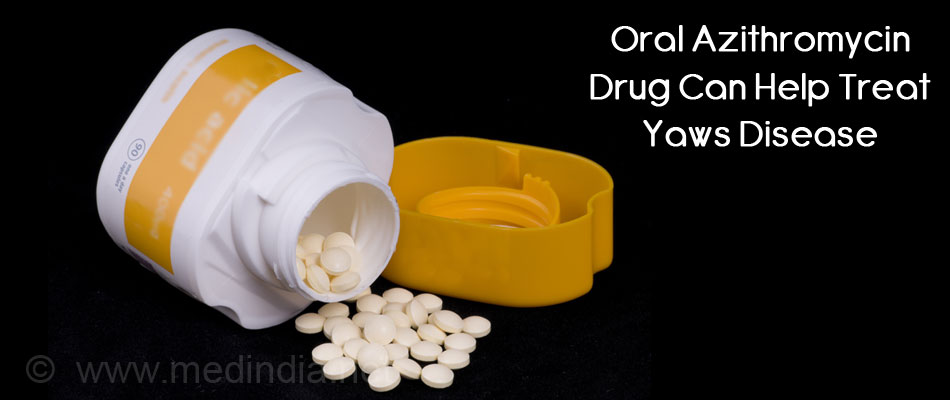
The WHO initiated a new global campaign in 2012 with an aim to eradicate yaws by 2020.
India has been successful in eradicating the disease. Disease-free status is obtained only when a disease is absent in that region for at least five years. India was declared free of yaws by the WHO on May 5, 2016.
India adopted a strategy of sustained campaign and used the benzathine penicillin injection to treat affected persons and those in close contact with them.
What are the Complications of Yaws?
The complication of yaws is mainly when the disease progresses to tertiary yaws, where the face gets deformed and that cannot be completely cured. The cuts could irreversibly affect the skin and bones.


